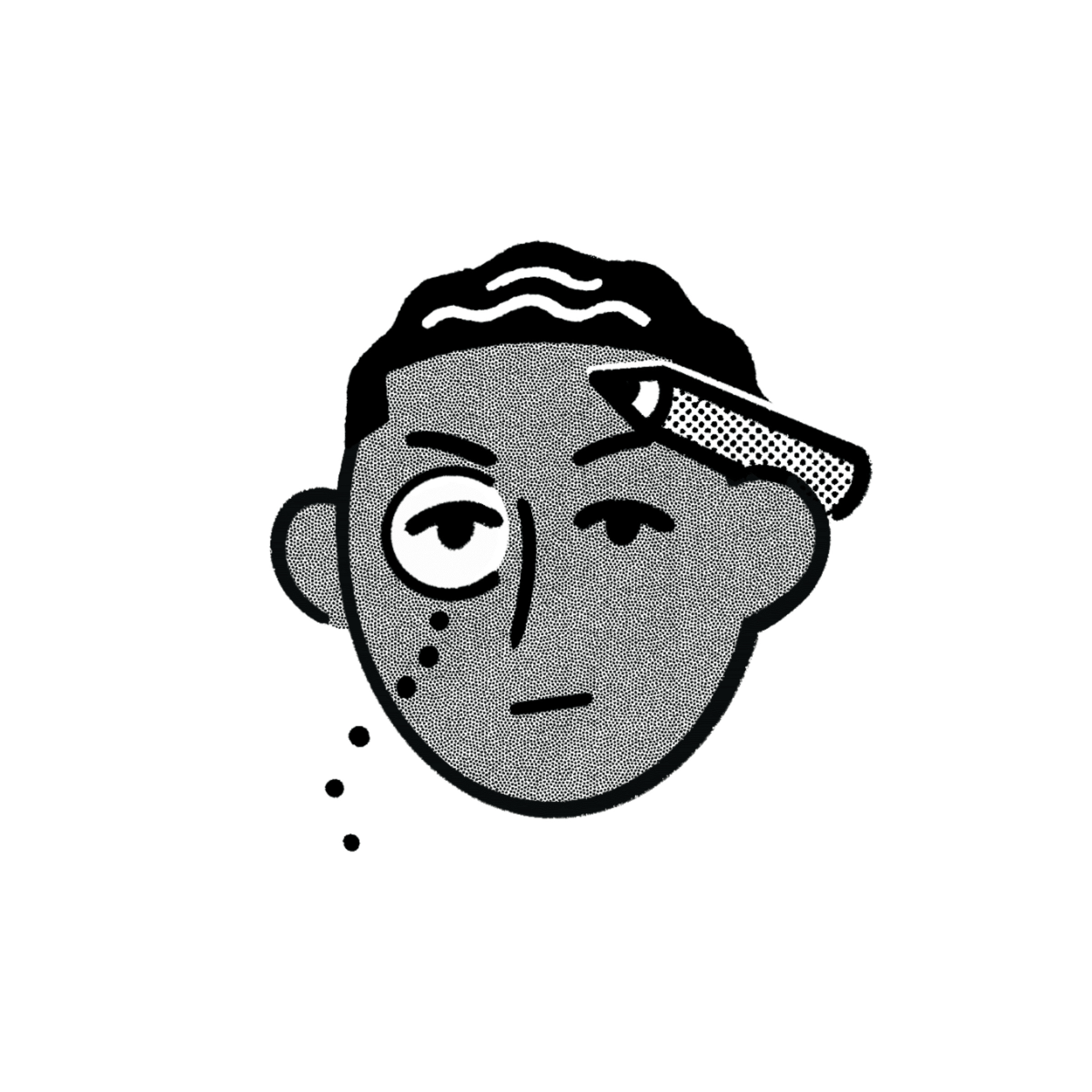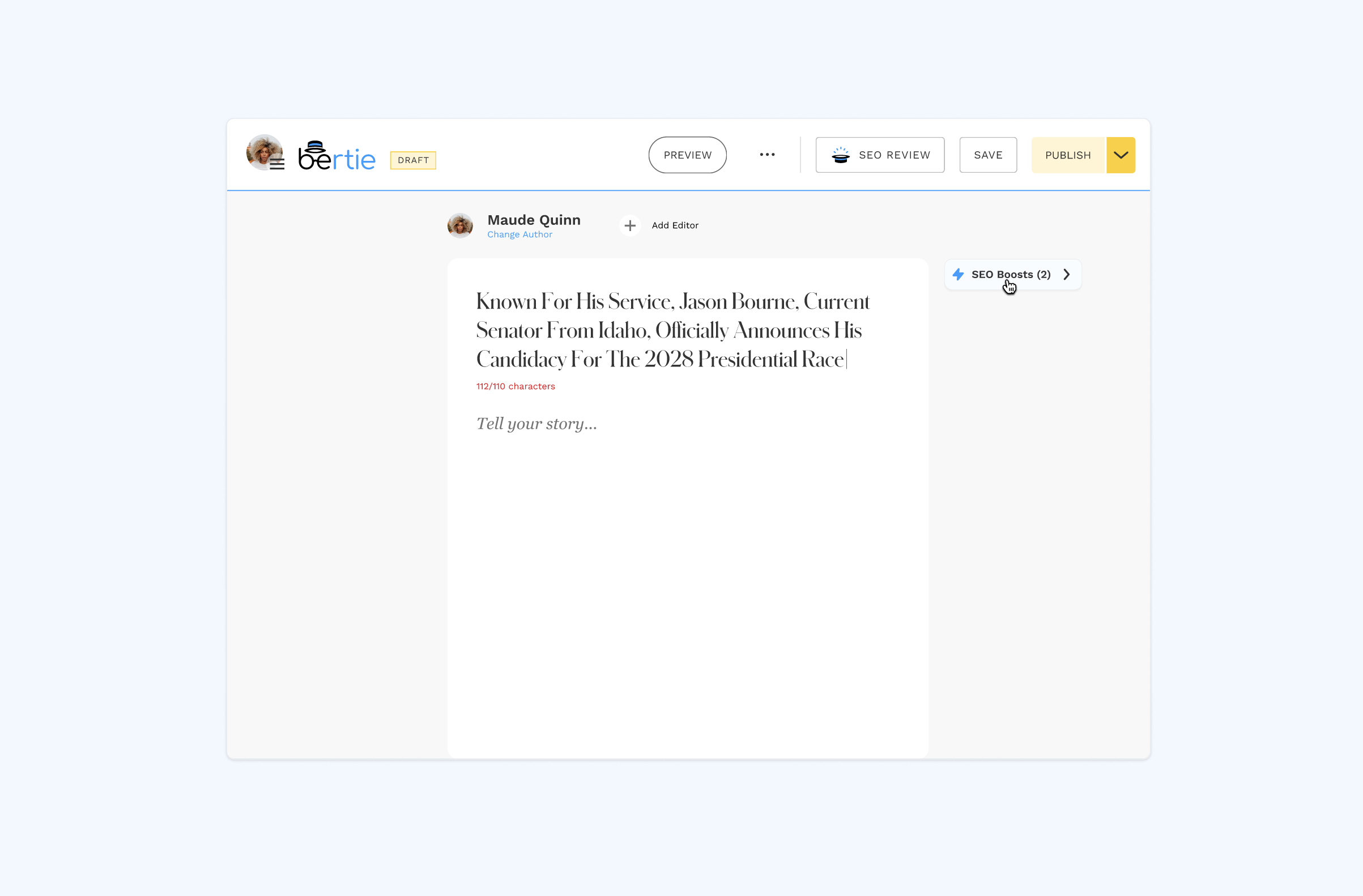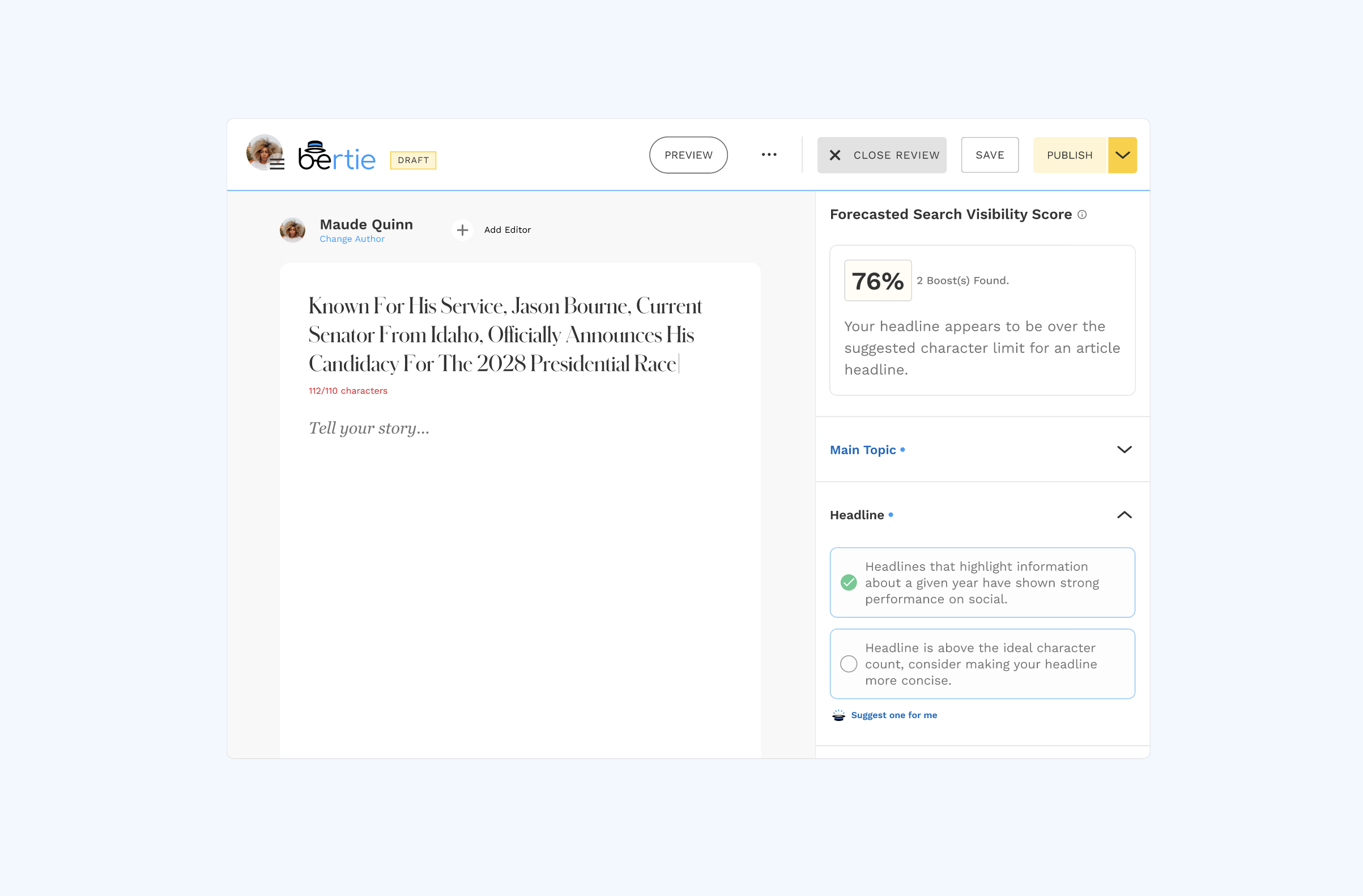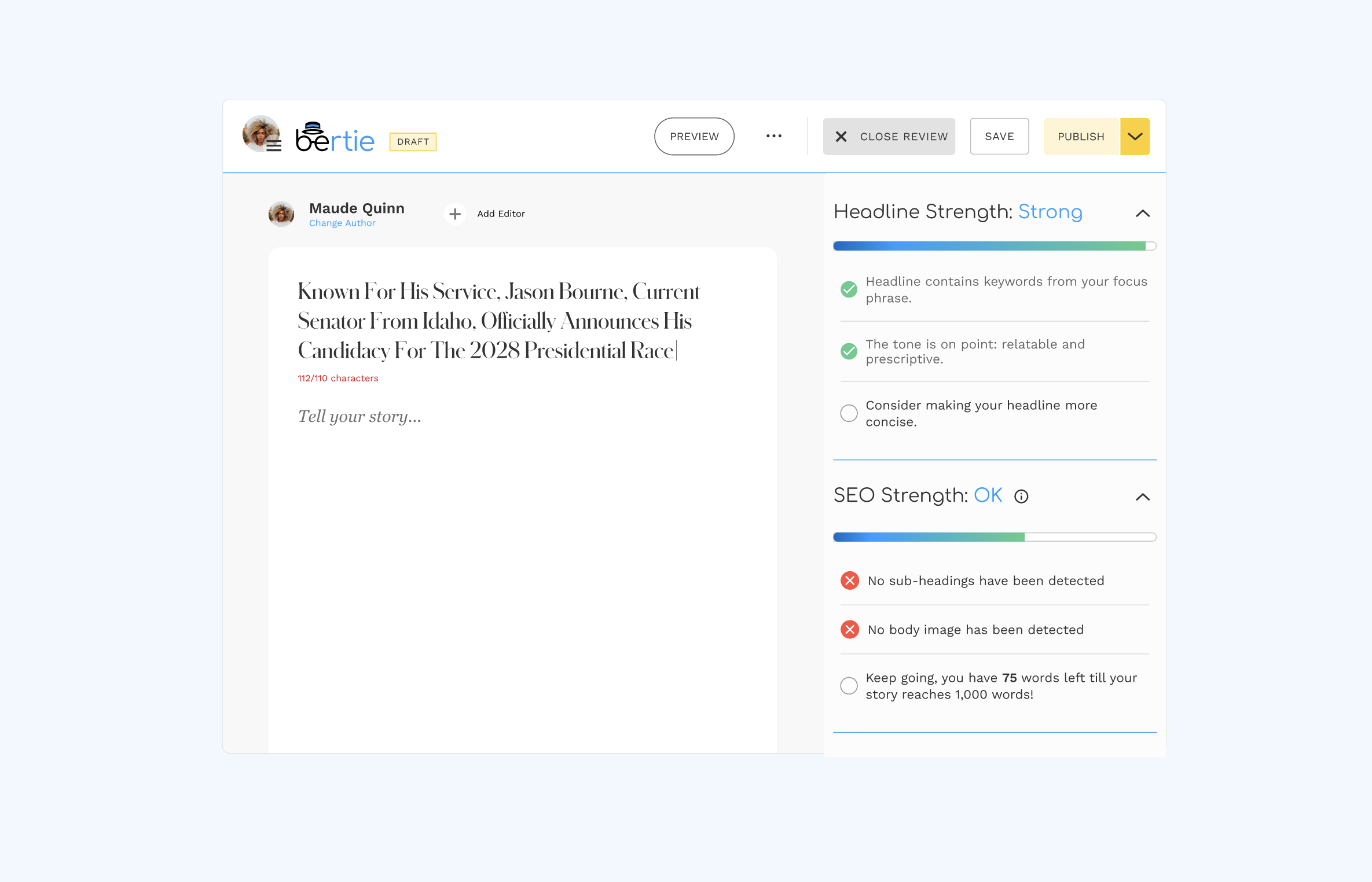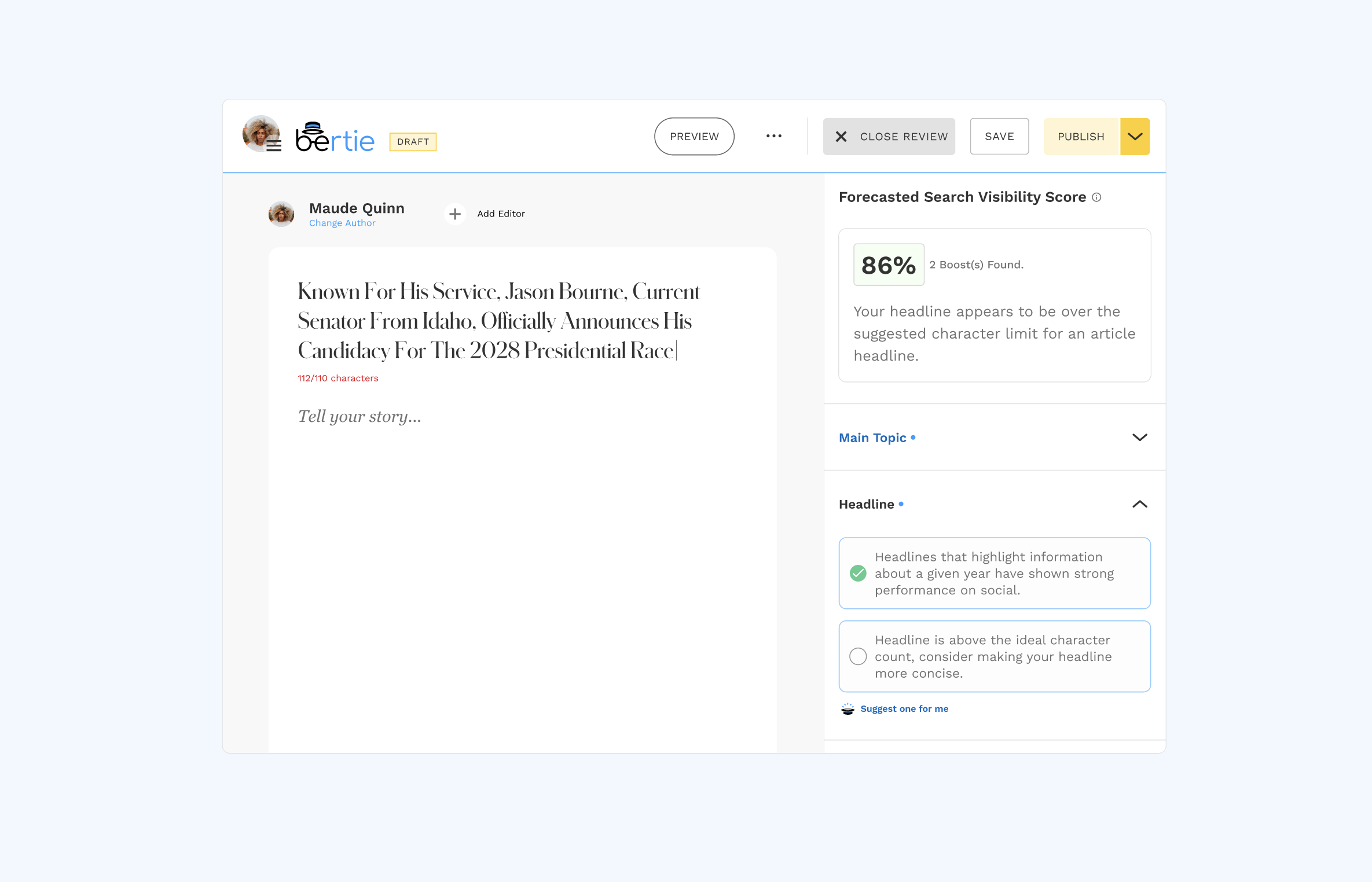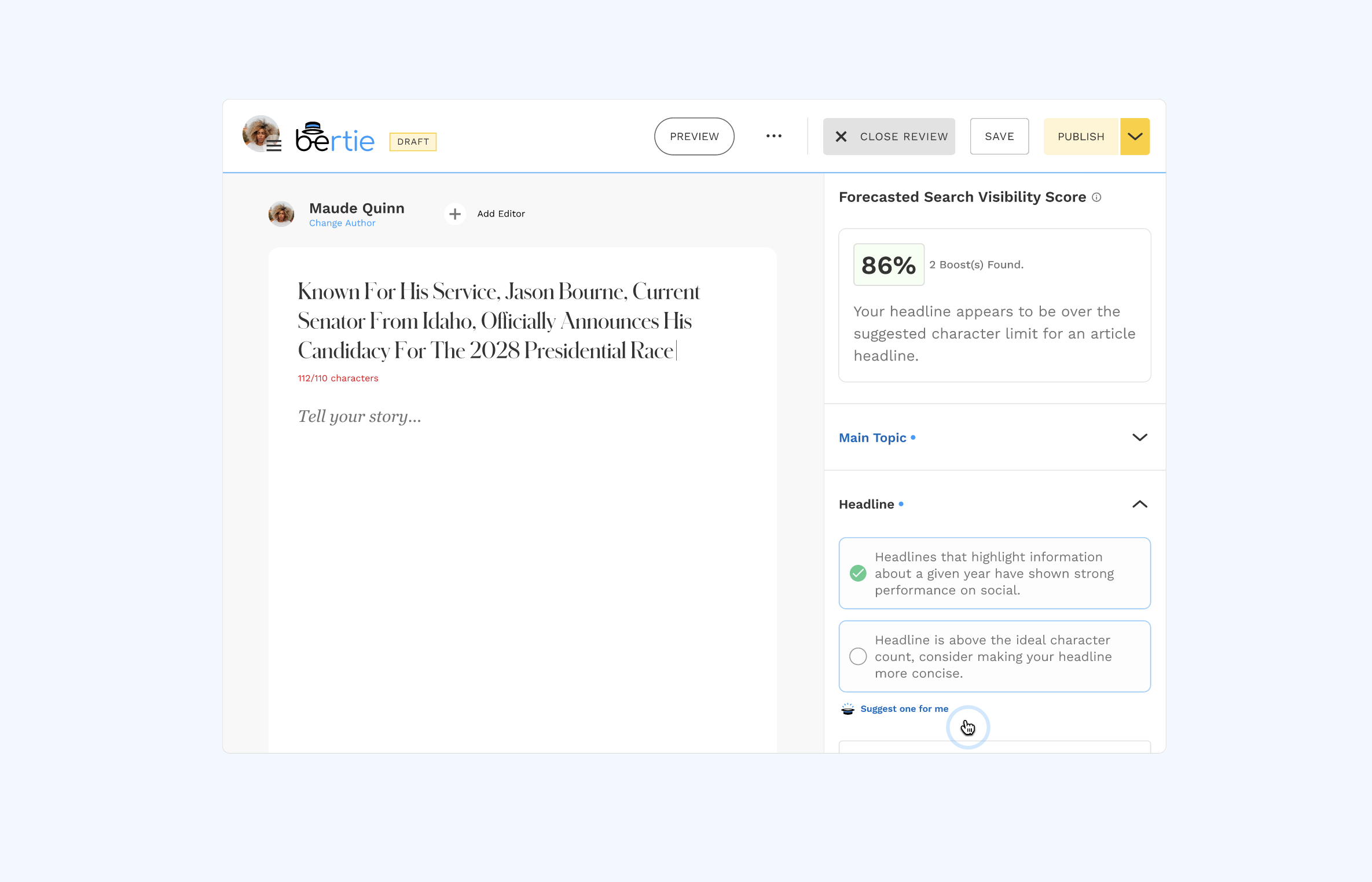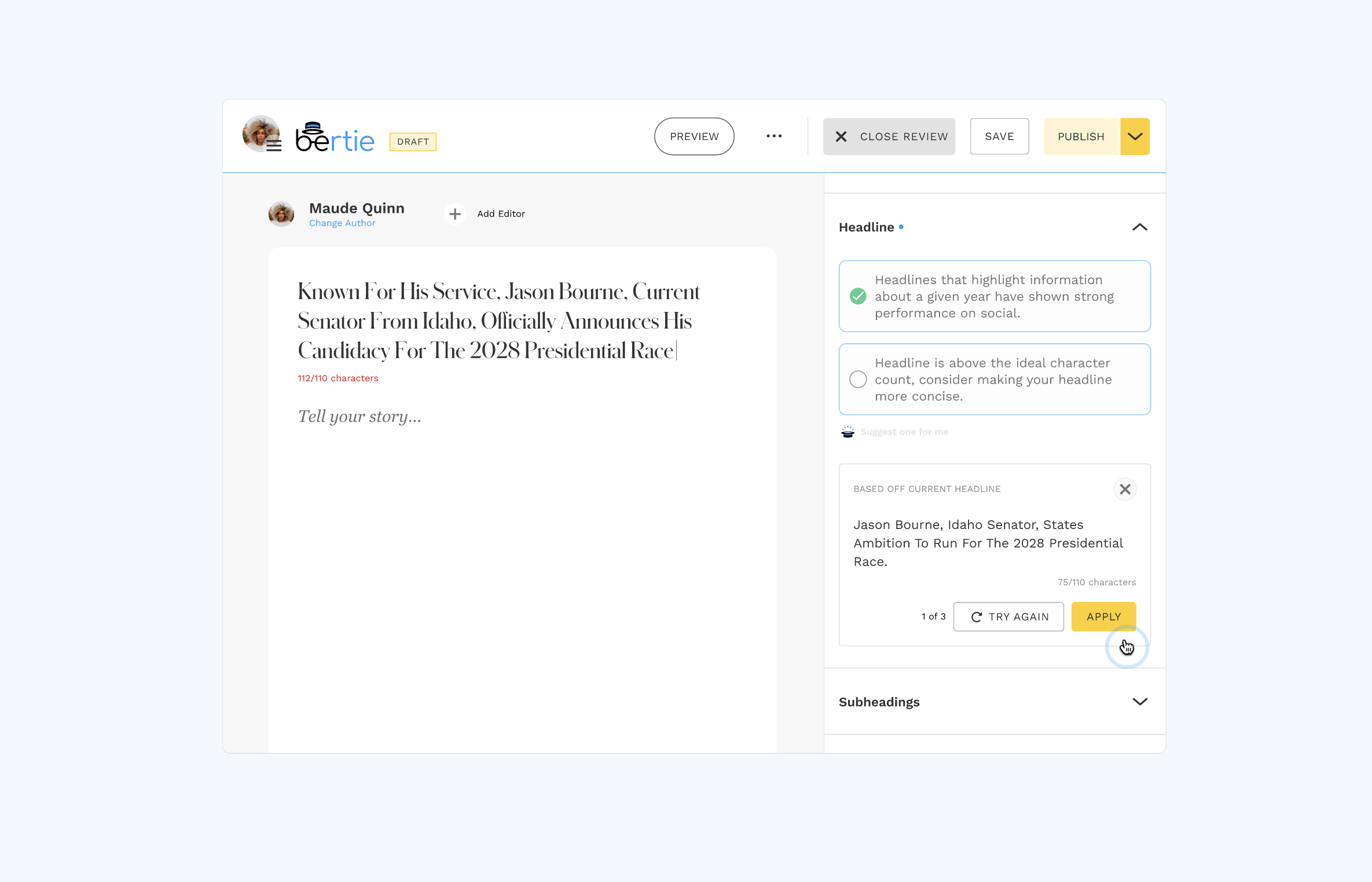Bertie Sidekick: Automating SEO Tasks for Forbes' Journalists
Introduction: SEO and Forbes
Writers are to Forbes, what LeBron James is to the Lakers; pivotal to the overall success of the entity.
Our responsibility on the digital side of the company is to amplify their talent; making sure every story is optimized to shine online. That means, SEO best practices are followed so Forbes' articles consistently rank high on Google, driving visibility, readership, and ultimately revenue.
Not long ago, SEO at Forbes was a walk in the park; the company's name alone gave our stories strong visibility. But with Google’s AI Overviews and Search Generative Experiences reshaping the search landscape, competition for visibility had intensified and to stay ahead, we needed to raise our average SEO performance across all stories.
The Problem
Low Usage of Bertie's SEO Tools
Bertie, our in-house writing platform, already featured an SEO assistant. But internal data showed an open rate of only ~29%, with feedback revealing that most of its features fell short of writers’ needs.
As a result, most writers avoided the assistant altogether and since our SEO Team couldn't possibly review the myriad of stories published daily, many of the stories never have the opportunity to be audited by the SEO Team; this gap likely dragged down our overall SEO performance.
The Opportunity
We saw this as a chance to reimagine our SEO assistant by making it more visible & helpful for writers.
The hypothesis we set out to test was:
Hypothesis
If we give writers a more effective tool, we can raise the baseline for SEO across all stories with the pay off being clear: stronger rankings, more pageviews, and ultimately, more revenue for Forbes.
Results & Impact
- The redesigned SEO assistant launched October 22 2024, and 1 month after its launch, adoption jumped from 29% to 54%.
- 3 months after launch, adoption was largely retained(-1% drop) despite a 47% increase in active users.
- ~4 months after launch (Jan 2025), Forbes recieved its highest comScore for site ranking & visitation in over 12 months.
Assistant metrics 1 month before launch.
Assistant metrics 1 month after launch.
Assistant metrics 3 months after launch.
comScore metrics.
Process: How We Got Here
Research & Discovery
At the time, I was still relatively new to the company and was shocked that a feature serving 500+ writers had an open rate below 30%.
This provided the perfect impetus to get to the root of why writers felt the SEO assistant fell short of their needs. In collaboration with our managers, Matt, my PM partner, and I kicked off the initiative by creating a questionnaire to uncover the key pain points within the existing SEO tool.
Slab doc for our UX research.
We tailored questions to understand writers' workflows, how SEO auditing fits into said workflows, and amongst those who had used the tool, what made it feel not worth the effort?
Highlights & Common Sentiments
- Writers felt the tool often told them what's wrong, but didn't provide a remidiation.
- Many were not well-versed in how SEO affects article performance and metrics.
- A common mindset was “I just want to publish and go,” with little concern for SEO auditing.
- A significant share of writers weren’t even aware the tool existed while others relied on SEO auditing from other platforms like SEMrush.
These 4 sentiments inspired the north star of what we were aiming for this product to achieve:
hmw statement
How might we make SEO guidance visible, actionable, and seamlessly integrated into writers’ workflows; so that even those unaware of the tool, or pressed for time feel empowered to audit their work with speed & confidence?
Insights: Heuristic Analysis on the Current Tool
For projects where the task is to redesign an existing feature, I complement user research with a heuristic analysis. While user feedback reveals what people struggle with, heuristics often explain why the interface might create inefficiencies or complexities. From my analysis, I surfaced several pros and cons with many of the cons directly echoing grievances journalists had previously shared about the tool.
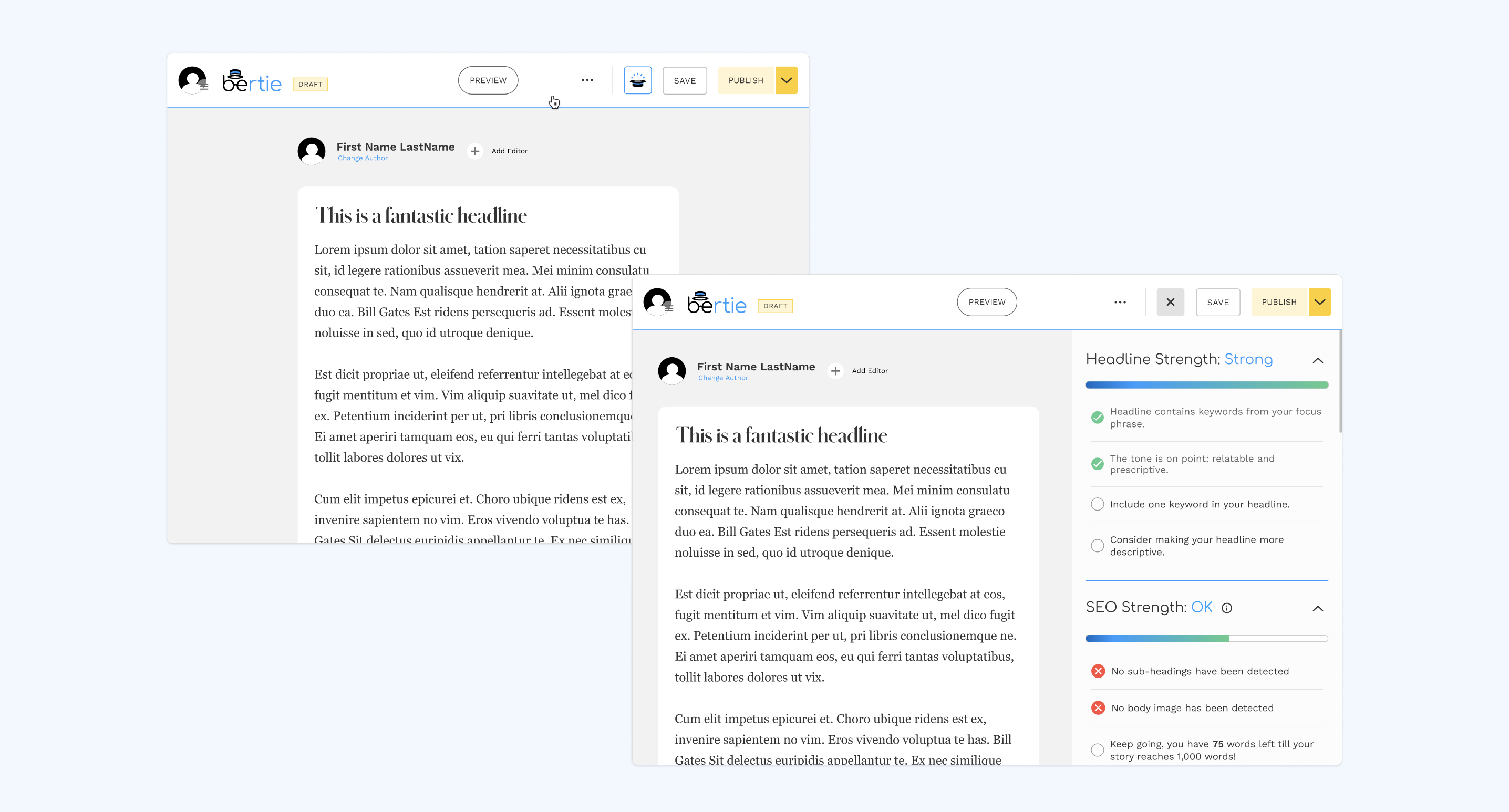
Design Artifact on the current tool that was used to perform the heuristic analysis.
Insight 1
Multiple System Statuses
I felt that multiple system statuses can be a cause for information overload as it can look like more work for the user to do as opposed to working towards one centralized goal.
Insight 2
Meet Me Half Way
No quick-fix options; every recommendation was just a warning with no actionable solution being provided. Many of these issues had the potential to be automated, but rather it was pushing the burden on the writers to resolve every type of error themselves.
Insight 3
Tone Mismatch With The User
Phrasing like "No sub-heading has been detected" or "No body image has been detected" is robotic and doesn't explain why they matter especially for writers; many of whom lack SEO expertise and may not see the connection between SEO and their story's viewership metrics.
Some feedback is phrased as advice ("Consider making your headline more descriptive"), while others are commands/errors ("No body image has been detected"). According to the Normal Neilson Group, tone from a website can affect desirability with conversational and enthusiastic tones performing best.
Ideation & Design
After the analysis, ideation and design phase were focused on solving 2 main problems.
1. Awareness & Visibility Even If The Assistant Panel Is Closed
2. Remediation of Suggestions That Could Be Automated
One of the first opportunities we explored was how to make the SEO Assistant's presence more visible; especially when the panel was closed or when a writer initially visited the story editor.
Initial concepts took two directions:
- Introducing an SEO toggle within the editor to activate recommendations inline.
- Displaying a pop-up notification above the page editor whenever new SEO suggestions were available.
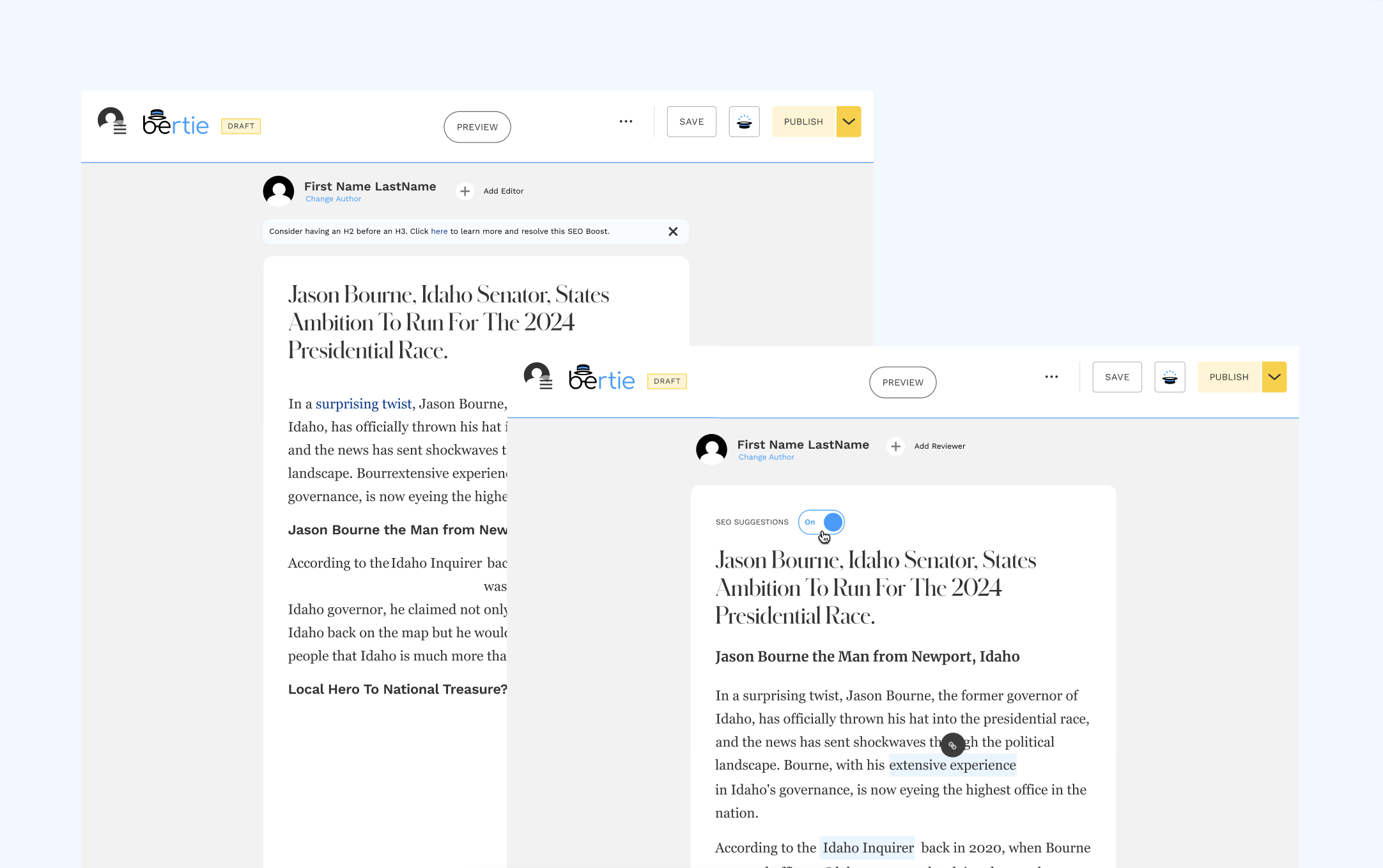
Utilizing a toggle and pop up message to surface SEO recommendations even if the assistant panel is closed.
Both early concepts made SEO guidance more visible but concerns from stakeholders were brought up about disrupting writers' flow & feng shui. This brought up the challenge of surfacing SEO insights at the right moment without disrupting the writer's focus.
Solution
The key features that emerged from our research insights and user needs.
Sidekick: Subtle SEO Notifications
Sidekick acted as a subtle notification system designed to balance that challenge of visibility and distraction. Instead of intrusive pop-ups or toggles, Sidekick quietly signaled new SEO opportunities through a small “SEO Boost” indicator beside the editor. When a new recommendation became available, the icon turned blue, prompting writers to check it at their own pace.
This approach met writers halfway: SEO guidance stayed visible, yet their creative flow remained uninterrupted.
Unified Scoring System
Before: Multiple progress bars competed for attention, creating information overload
and making it unclear where to focus. When everything looks like a priority, nothing truly is.
After: A single, centralized SEO score replaced fragmented indicators;
affording writers one clear goal to work toward and making optimization feel simpler and more achievable.
Automatic Application of SEO Suggestions
Before, if a writer recieved a suggestion to make a headline more concise, they would have to come up with a more conicse version on their own. With AI now in the mix, we could
interpolate their original headlines and provided generated variations that fit within the rules we've set for the SEO scoring system.
This allowed
writers to quickly apply suggestions and move on to the next. An upgrade on the previous experience that never presented a remedy for things that could be automated.
Lessons Learned: Why This Experience Mattered

The uptick in engagement after the redesign of this feature shows that UX improvements can drive measurable improvements in real user behavior. Overall, what I took from this project is that when it comes to workflow based UX, you want to be conscious of balancing visibility and distraction by making guidiance felt, but not forced
A personal highlight professionally was being called the "Salvador Dali of product design" by Dor, our Director of Product, Monetization. While the title might be a bit of a stretch, it was a great way to end my first high visibility project at Forbes.
